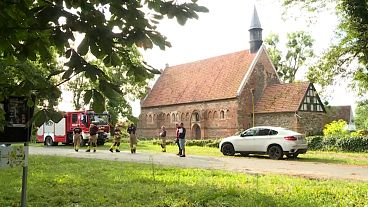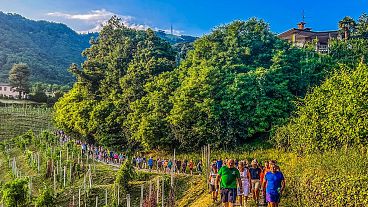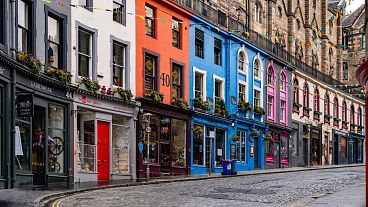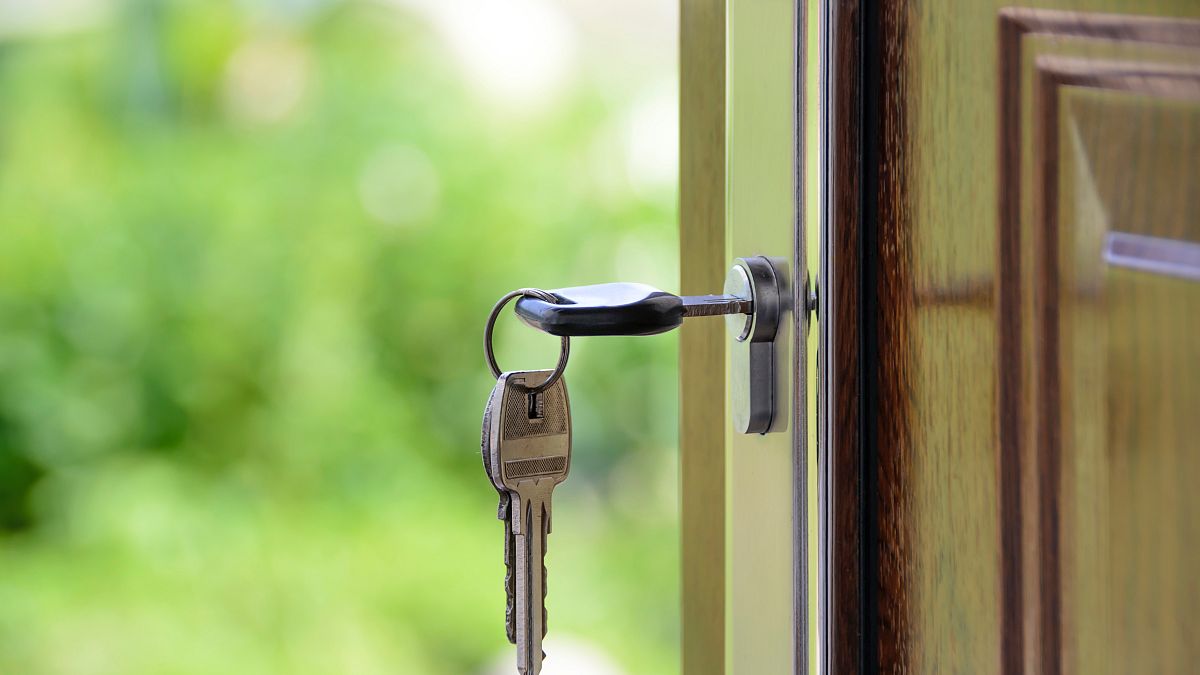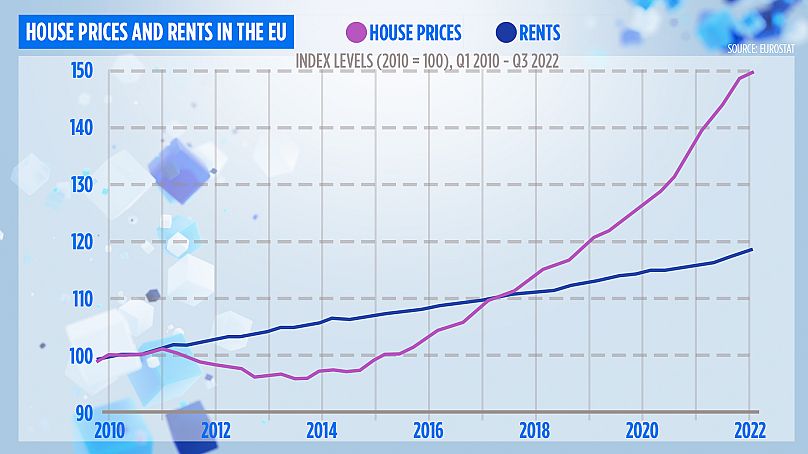In the second part of our three-part series, Euronews investigates how tourism is proving to be both a blessing and a curse for young people hoping to buy or rent property in Italy and Ireland.
Competing with tourists
Italy's charming lakes, world-famous gastronomy, climate and heritage attract millions of tourists every year. Some 56 million tourists reportedly visited the Bel Paese in 2022; a figure close to pre-pandemic levels.
While tourism is one of the main drivers behind Europe's third-largest economy, locals in some of Italy's most popular cities like Milan, Rome, Venice and Naples are struggling to compete with the year-round flow of tourists for a limited supply of housing.
Airbnb, the online accommodation service that allows property owners to rent their homes or rooms to travellers, was introduced to the country in 2008. According to resident Fabio Scrivanti who works at the Venice Art Factory, it created a living nightmare for locals needing affordable accommodation.
"Venetian landlords discovered that it was more profitable to list their property on Airbnb than rent to everyday people," he told Euronews.
"It's controversial because locals can't afford to pay upwards of say €80 for a room per night - the price someone might pay for an overnight stay in a hotel - if they had to reckon with these prices, that would amount to €2,400 per month, that's crazy, I certainly couldn't afford that," he said.
"I am 29, I have a master's degree and work in the field I studied at university, I have lots of experience but even still, salaries are not high in Italy. People my age can't afford rent, never mind a house of their own, lots of my friends are still living at home with their parents, it's just easier.
"I got lucky with my shared apartment because my landlord gave me my room at a good price but this is rare, I know this isn't the reality for many people" he explained.
Aside from Airbnb, astronomical rents in some of Italy's major hubs are also making it more difficult for city residents to afford down payments on mortgages. According to Europe's largest online rental platform, Housing Everywhere, Milan is one of the most expensive cities in Europe.
Lucia Pizzimenti (35) an environmental engineer, living and working in Milan, told Euronews: "I am living with my grandmother who has a spare room in her apartment because I don't want to pay upwards of €800 for a small room here".
Lucia has been searching for a property of her own for the last seven years but recently she had to broaden her search to commuter towns or nearby cities in order to find a flat within her budget.
As aspiring renters and homeowners in Italy continue to battle the influx of tourists post-pandemic and soaring accommodation costs, the lack of short-term accommodation solutions in Ireland is discouraging tourists from visiting the Emerald Isle.
The Irish Tourism Industry Confederation (ITIC) says the cost inflation on holiday accommodation is having a negative impact on the tourism sector and that one-third of tourism beds outside of the capital are under government housing contracts, serving as international protection accommodation for refugees and asylum seekers. In County Donegal alone more than 50% of tourism beds are contracted by the Government.
The number of international visitors to Ireland during the first quarter of 2023 was 16% below January-March 2019. As Irish tourism providers struggle to match Ireland's pre-COVID visitor levels, many companies within the sector fear ongoing price hikes will put Ireland's long-term reputation at risk.
This affects activity and tour providers across the country who rely heavily on hotels, B&Bs, hostels and Airbnb to house visitors during their stays.
Nowhere to go
Europe's migration crisis or the strain it places on the lack of available accommodation is now having an effect on refugees and locals alike.
According to the Irish Refugee Council, rapid increases in asylum seekers, specifically Ukrainian refugees, have highlighted the shortcomings of Ireland's housing policy. So far, some 73,000 Ukrainian refugees have fled to Ireland since the beginning of Russia's full-scale invasion, and they all need a place to live.
The Irish Red Cross reported that the lack of readily available emergency accommodation in Ireland for Ukrainian refugees had reached a crisis point in July 2022 despite the public's best efforts. In March 2022, Irish Red Cross Secretary General Liam O’Dwyer confirmed that approximately 23,000 locations had been offered up by the public to be vetted to house Ukrainians.
While Irish residents were hailed for their generosity, this figure wasn't enough. As a consequence, some Ukrainian refugees arriving in Ireland had little choice but to sleep on the floor of Dublin Airport, in hotel lobbies and temporary campsites.
The Irish government has promised to find solutions to the housing shortage and support local communities, newcomers and asylum seekers alike but the ITIC says that tourism and the revenue it generates also need to be factored into the equation.
The decade of lost development
According to Mark Rose, the Managing Director of Rose Properties, Ireland's economic growth and recovery after the 2008 crash was largely thanks to foreign direct investment: “We have recovered well, there is lots of money and lots of jobs in Ireland but there is no housing to support everyone that we are attracting in. So, even if we wanted to attract builders to help relieve the crisis, as many countries do, there would be nowhere for them to live,” he said.
"We had little to no building in this country for nine or ten years because there was no money to build, architects, bricklayers, electricians, builders, they all moved overseas to Australia etc in search of work, and these professionals never returned."
While Ireland is still one of the least densely-populated countries in Europe, the laws governing planning permission create a lot of red tape for potential builders, as Roy Dennehy, the Head of Dennehy Auctioneers explained: “We're living in the lag period because in 2006 we had a population of maybe four and a half million, but we were building 90,000 units.
"That's between apartments and houses per annum. The population is higher now and we are only building a fraction of what we were," he added.
The CSO found that some 30,000 residential units were built in Ireland last year, a third of the dwellings built across the Irish State in 2006.
For the final installment of this three-part series click on the link below.

